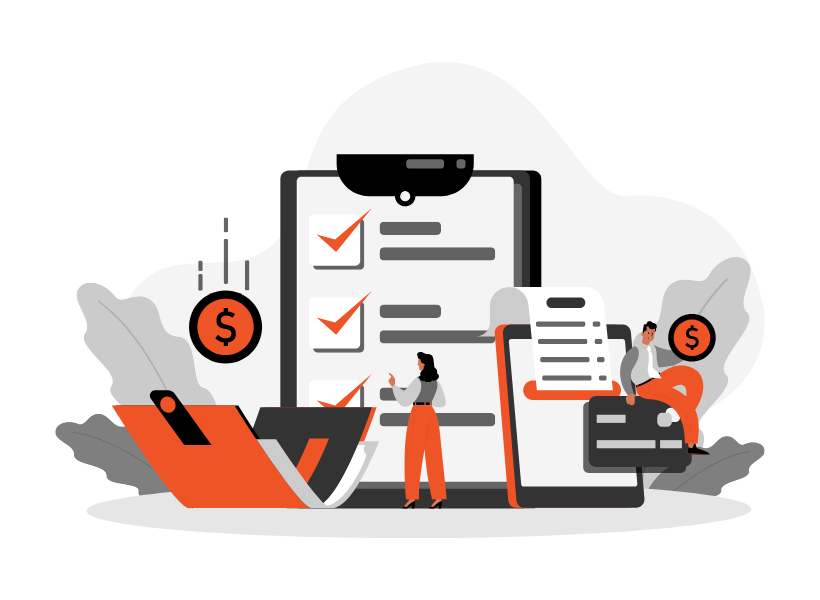Maximizing Portfolio Company Value Through Effective Integration

In the high-stakes world of private equity, effective post-acquisition integration is crucial for maximizing investment value. This complex task involves more than just merging financial statements; it requires a comprehensive blending of systems, cultures, and operational strategies. Successful integration can substantially enhance efficiency and spur growth, ultimately determining the longevity and profitability of the investment.
Effective post-acquisition integration is a multifaceted process that directly impacts the efficiency and growth potential of an acquisition. For private equity firms, this means not only capturing financial synergies but also aligning operational processes and corporate cultures. Strategic integration ensures that the newly formed entity can operate more cohesively and compete more effectively in its market.
One of the most challenging aspects of post-acquisition integration is the technical consolidation of IT systems. This process includes harmonizing disparate software platforms, merging data centers, and ensuring that all technological components are seamlessly integrated. Effective technical integration is critical because it supports day-to-day business operations and enables data-driven decision-making.
At the core of technical integration is data consolidation. Merging data from different companies involves aligning various formats, structures, and systems to create a unified data repository. This task is crucial for maintaining data integrity and ensuring that all business insights are based on accurate and comprehensive information. Advanced data integration tools, such as Extract, Transform, Load (ETL) technologies, are often employed to streamline this process. These tools help mitigate the risk of data loss and ensure that the integration is both time-efficient and secure.
System compatibility is another significant hurdle. Each company may use different IT systems that, if not properly integrated, can lead to inefficiencies or data silos. The goal is to create an IT infrastructure that supports both current operational needs and future growth. This might involve upgrading systems, adopting new technologies, or custom-developing software solutions that can integrate smoothly with existing tools.
With the integration of IT systems, security and compliance issues come to the forefront. Ensuring that the new entity adheres to all relevant laws and industry regulations is paramount. This includes safeguarding sensitive data against cyber threats and maintaining privacy standards. Comprehensive cybersecurity strategies must be implemented and continuously updated to protect against evolving threats.
Another crucial element is the streamlining of applications and software. Redundant systems need to be identified and either integrated or eliminated. This decision is not only technological but also strategic, as it impacts how effectively the merged entity can respond to market demands. Application rationalization can lead to significant cost savings and operational improvements by eliminating unnecessary licenses, maintenance fees, and support costs associated with redundant systems.
The ability to effectively manage the technical aspects of integration can have a profound impact on the success of a private equity investment. Well-integrated systems facilitate smoother operations, better customer service, and quicker strategic decision-making. They also support scalability by ensuring that the IT infrastructure can accommodate growth and adapt to changing market conditions.
Mastering the technical intricacies of post-acquisition integration is essential for private equity firms. This process not only affects the immediate operational effectiveness of a newly merged entity but also its long-term strategic positioning. By focusing on detailed, effective integration practices, private equity firms can maximize the value of their investments, delivering substantial returns and strengthening their market presence. This strategic imperative is crucial for the sustained success of their investment strategy, demonstrating the profound importance of technical integration in the realm of private equity.
For more information or to learn how REEA Global can assist your portfolio company with integration planning and execution, contact us at info@reeaglobal.com.
Demystifying Series A Financing: Fueling Growth for Your Company

Greetings, fellow entrepreneurs! We’re delving deep into the realm of Series A financing – the crucial growth stage funding that can propel your company to greater heights. Series A isn’t just about the financial infusion, though that certainly helps. It’s about strategically positioning your company for a trajectory that goes beyond the stratosphere.
Understanding Series A Financing
In essence, Series A financing signifies a significant investment by professionally managed funds – think of them as heavyweight players – in your company. They don’t merely hand over funds; they bring their wisdom, networks, and industry insights to the table. This phase often follows initial seed funding and typically occurs after your product-market fit has been established.
Key Actions for Series A Stage Companies
As your company steps into the Series A stage, think of it as a promising artist ready to take center stage. You possess talent in the form of your product, but now it’s time to fine-tune, expand your reach, and make a lasting impact.
1. Product Development and Refinement
At this stage, your product needs to be tailored like a perfectly fitted suit. Listening to your users becomes paramount. Gather their feedback, iterate rapidly, and ensure your offering aligns flawlessly with market needs. This continuous feedback loop is the secret sauce for perpetual improvement. This is also when you should start enhancing your internal processes and systems to accommodate your growth. Think of it as tuning your instrument before a grand performance.
2. Market Expansion
Series A is your golden opportunity to expand your market base. By now, you’ve proven your product’s worth, and it’s time to take it to a broader audience. This isn’t just about selling more; it’s about identifying new niches and uncharted territories where your product can thrive. Robust market research is essential. You need to pinpoint new markets, regions, or demographics that are ripe for your product. Look for untapped opportunities and devise a strategy for entering these markets effectively.
3. Building a Strong Team:
Your team is the backbone of your company, and it’s time to assemble the right talent. Hire individuals with the right skills who also align with your company’s values and mission. A cohesive team complements each other’s strengths, fostering an environment where innovation flourishes.
Moreover, the company culture you build is crucial. Encourage creativity, open communication, and a culture of continuous learning. A harmonious team that shares a common vision can navigate challenges, adapt to change, and steer your company toward success.
Overall, Series A financing is the phase where you fine-tune your product, expand your horizons, and prepare for an exciting journey ahead. It’s a pivotal chapter in your company’s narrative, and when approached correctly, it can set the stage for a bright future.
Here at REEA Global, we’re your backstage pass to success. We can assist by helping you identify user needs and convert them into actionable requirements for your product planning. Plus, we’re experts at executing those plans quickly, so you can stay ahead of the competition and keep your fans (customers) coming back for more.
Navigating the Complexity of Post-Acquisition Integrations: A Strategic Imperative for Growth and Efficiency

In the dynamic landscape of business growth and expansion, mergers and acquisitions (M&A) represent a critical strategy for companies aiming to enhance their market presence, diversify their portfolio, and achieve economies of scale. However, the true challenge and opportunity for value creation lie in the post-acquisition integration phase, where the merging of operations, systems, and cultures determines the realization of the anticipated synergies. This article delves into the complexities of post-acquisition integrations, highlighting why efficient and secure integrations are paramount for maximizing the value of acquisitions, minimizing disruptions, ensuring data integrity, and achieving cost savings and operational efficiencies promptly.
The subject of assisting companies with the integrations that occur after acquisitions is increasingly relevant in today’s corporate environment. Companies within the growth and mid-market revenue ranges ($10M to $500M) that have recently undergone or completed acquisitions are particularly susceptible to the myriad challenges that can arise during the integration process. The complexities of merging data from disparate systems, facilitating communication between existing applications, untangling the mess of applications inherited from both entities, and addressing technical debt from legacy systems pose significant hurdles. These challenges underscore the necessity for a meticulously planned and executed integration strategy.
The target audience for post-acquisition integration solutions encompasses a broad spectrum of roles within the company, including but not limited to CEOs, Chief Technology Officers (CTOs), Chief Operations Officers (COOs), Chief Information Officers (CIOs), VPs of Engineering, Directors of IT, Project Managers, and Merger & Acquisition Integration Leads. These individuals are instrumental in steering the integration process, making strategic decisions, and implementing technologies and processes that facilitate a smooth transition. Their involvement is crucial for the identification, planning, and execution of integration strategies tailored to the specific needs and objectives of the merging entities.
The pain points associated with post-acquisition integrations are multifaceted and substantial. The massive task of merging data from disparate systems can become a bottleneck, slowing down the integration process and delaying the realization of benefits. Similarly, the frustration of getting existing applications to communicate effectively can hinder operational efficiency and lead to missed opportunities. The complexity of dealing with a tangled web of applications from both companies, alongside the incompatibility of existing applications with the needs of the merged entity, can exacerbate these challenges. Furthermore, the technical debt associated with legacy systems necessitates the development of new solutions, adding to the complexity and cost of integration efforts.
The significance of addressing these pain points cannot be overstated. Efficient and secure integrations are crucial for several reasons. Firstly, they enable the maximization of the value of acquisitions by ensuring that the anticipated synergies are realized. Secondly, minimizing disruptions during the integration process is essential for maintaining operational continuity and safeguarding against revenue loss. Thirdly, ensuring data integrity is paramount in an era where data is a critical asset, and its loss or compromise can have far-reaching consequences. Lastly, achieving cost savings and operational efficiencies promptly is vital for the financial health and competitive positioning of the merged entity.
There are several strategies and solutions that companies can employ to navigate the complexities of post-acquisition integrations. Data integration involves engaging a software development firm to design solutions that transform and consolidate data from disparate sources, thereby facilitating data integrity and access. API integration, on the other hand, focuses on creating application programming interfaces to ease the flow of information between systems, enhancing communication and operational efficiency. Consolidating and migrating applications is another critical strategy, involving the untangling of the complex web of applications and identifying overlaps and inefficiencies. Custom application development may also be necessary to build new applications that cater to the combined functionalities or bridge gaps between old systems.
The benefits of effectively managing post-acquisition integrations are manifold. Accelerated integration timelines enable companies to quickly return to business as usual, reducing operational disruptions and mitigating the risk of revenue loss. Enhanced data security and compliance ensure that the merged entity can protect its critical data assets and meet regulatory requirements. Achieved cost savings and operational efficiencies contribute to the financial health and competitive advantage of the company. Moreover, a smooth transition to unified systems and processes facilitates the realization of synergies and supports the strategic objectives of the merger or acquisition.
To illustrate the importance of effective post-acquisition integrations, consider the example of a large technology firm that acquired a smaller competitor to enhance its product portfolio and market reach. The integration process involved merging customer data platforms, consolidating financial systems, and aligning product development processes. Despite the complexity, by prioritizing data and application integration, employing a phased approach to system consolidation, and developing custom solutions to bridge functional gaps, the company was able to achieve a seamless integration. The result was not only the realization of cost savings and operational efficiencies but also an enhanced ability to serve a broader customer base with an integrated product offering.
In conclusion, the complexities associated with post-acquisition integrations present significant challenges for companies seeking to realize the full value of their M&A activities. However, by understanding the critical pain points, engaging the right expertise, and implementing effective strategies and solutions, companies can navigate these complexities successfully and unlock the potential for growth and efficiency. The involvement of key stakeholders, including executives and integration leads, is essential for driving the process forward and ensuring alignment with strategic objectives.
As businesses continue to pursue growth opportunities through mergers and acquisitions, the importance of post-acquisition integrations will only increase. Companies that prioritize efficient and secure integrations will not only maximize the value of their acquisitions but also position themselves for long-term success in an increasingly competitive landscape. By investing in the right technologies, processes, and talent, organizations can overcome the challenges of integration and emerge stronger, more agile, and better positioned to capitalize on market opportunities.
In essence, post-acquisition integration is not just a technical process; it is a strategic imperative for growth and efficiency. By addressing the complexities head-on and leveraging integration as a means to unify operations, systems, and cultures, companies can realize the full potential of their M&A activities and create value that extends far beyond the initial transaction. In today’s fast-paced business environment, the ability to navigate these complexities effectively can spell the difference between success and stagnation. Therefore, embracing integration as a strategic priority is essential for companies looking to thrive in an ever-evolving marketplace.
Beyond BigCommerce: Unboxing Full-Stack Solutions for E-commerce Success

In today’s digital landscape, e-commerce has evolved into more than just transactional platforms; they now serve as comprehensive experiences defining brand loyalty and customer satisfaction. As businesses aim to stand out in this competitive marketplace, the role of full-stack software development has become increasingly pivotal. Companies using platforms like BigCommerce encounter challenges highlighting the growing need for specialized engineering solutions that delve deeper than surface-level website design and functionality.
The core issues revolve around limited customization capabilities, difficulties integrating third-party applications, scalability concerns during peak traffic periods, and constraints in data analytics. These pain points contribute to subpar customer experiences, impacting a business’s bottom line. In a market where consumers have numerous options at their disposal, offering a generic user experience can lead to decreased sales conversions and operational inefficiencies. Moreover, the inability to seamlessly integrate with essential third-party services or scale effectively can result in lost revenue and diminished brand loyalty. In such a competitive environment, these shortcomings are not minor obstacles but critical failures that can erode a company’s market position.
Addressing these challenges necessitates a nuanced understanding of both the technical and business aspects of e-commerce. For instance, consider a retailer on the BigCommerce platform striving to differentiate its offering with a unique and engaging user experience. Achieving this goal might involve custom-developing themes and features aligned with the brand’s identity and values. However, such customization demands technical expertise and creative design thinking that surpass basic template adjustments, requiring a full-stack development approach considering both frontend user experience and backend systems.
Integrating third-party applications and services is another area where specialized engineering expertise proves invaluable. Many e-commerce businesses rely on various tools for functions such as payment processing, inventory management, and customer relationship management. Creating seamless integration between these tools and the core e-commerce platform can be complex, potentially leading to data silos and workflow inefficiencies. A full-stack development firm can architect solutions ensuring smooth integration while maintaining system integrity and data coherence.
Scalability is crucial for any e-commerce platform, particularly during high-traffic events like sales or product launches. Traditional hosting solutions may struggle to cope with sudden traffic spikes, resulting in slow loading times or crashed websites. A sophisticated scalability approach involves designing an architecture capable of dynamically adjusting resources to meet demand, consistently ensuring a responsive user experience. This architectural planning and implementation are hallmarks of full-stack software development expertise.
Furthermore, the role of data analytics and reporting is vital in the e-commerce domain. Enhanced decision-making capabilities stem from businesses deriving actionable insights from their data. However, many e-commerce platforms offer limited analytics functionality, hindering companies’ ability to fully grasp customer behavior and preferences. A full-stack development firm can integrate advanced analytics tools, providing deeper insights into the customer journey, empowering businesses to make informed decisions, driving growth, and improving customer satisfaction.
To conclude, the challenges encountered by companies on BigCommerce and similar platforms are multifaceted, necessitating a comprehensive approach to software development addressing both technical and business e-commerce needs. With their ability to tackle complex problems from frontend design to backend scalability and integration, full-stack software development firms are uniquely positioned to assist companies in overcoming these challenges. Businesses can leverage their expertise to enhance their e-commerce platforms with custom features, seamless third-party integrations, scalable architectures, and advanced analytics capabilities. By doing so, they can create differentiated, engaging customer experiences, drive sales conversions, foster brand loyalty, and secure their competitive edge in the bustling e-commerce marketplace.
Scaling Beyond Plug-and-Play: Why Engineering Expertise is Key to Next-Level E-Commerce Solutions

In the ever-evolving e-commerce landscape, businesses crave sophisticated online experiences. While plug-and-play solutions offer a quick entry for smaller ventures, they often fall short when handling complex projects. This is where engineering expertise becomes a game-changer for agencies aspiring to elevate their offerings and unlock the full potential of platforms like Magento and BigCommerce.
For many agencies, relying solely on resources tailored for plug-and-play solutions, whether in-house or outsourced, can pose significant challenges. These resources might lack the experience and technical finesse required for the intricacies of larger e-commerce platforms, resulting in project delays, scope creep, and, ultimately, client dissatisfaction.
While entry-level platforms like Shopify and WooCommerce provide a swift way to launch products online, they may hinder growth in later stages. A proficient e-commerce agency not only aims to expedite client growth but is also prepared for the downstream implications of that growth. Picture these scenarios:
- A rapidly growing apparel retailer needs a custom-built product configuration tool to accommodate intricate design options and size variations. This requires expertise in front-end development to create a user-friendly interface and back-end development to integrate seamlessly with inventory and order management systems.
- A B2B marketplace requires a multi-vendor platform with advanced user roles, complex pricing models, and sophisticated reporting tools. This demands expertise in API integration, security protocols, and data architecture.
- A subscription-based service provider needs to integrate a recurring billing system with their e-commerce platform. This requires expertise in payment processing APIs and secure data handling practices.
In these cases, plugging in a pre-built solution falls short. What’s crucial is a team of seasoned engineers who can comprehend unique client needs, translate them into technical requirements, and construct a custom solution that scales seamlessly with the business.
Teaming up with a full-service engineering and user experience research firm provides the necessary expertise and resources. These firms offer a structured approach to project planning, execution, and delivery to meet timelines and budgets. By prioritizing user-centric design for intuitive and engaging interfaces, they seamlessly integrate third-party systems and guarantee smooth data flow throughout the platform. This ensures adaptability and scalability as the client’s business evolves and future-proofs the platform.
A strategic partnership with a full-service engineering firm empowers agencies to diversify their service offerings, providing clients with a broader range of solutions, including intricate Magento and BigCommerce projects. This collaboration boosts client retention by offering the expertise needed to achieve long-term e-commerce goals, ultimately increasing client lifetime value. Such partnerships set agencies apart, positioning them as trusted advisors and recognized experts in the e-commerce space, solidifying their competitive edge.
Ultimately, Investing in engineering expertise is a strategic decision that unlocks substantial growth opportunities for agencies. They can transcend plug-and-play solutions by aligning with the right firm to deliver advanced e-commerce experiences that yield tangible client results. Further, this collaborative shift allows agencies to leverage the expertise of engineering specialists while retaining ownership of client relationships, fostering long-term partnerships.
In today’s fiercely competitive e-commerce landscape, engineering expertise is not just an advantage but a necessity. For agencies looking to survive and thrive, embracing collaboration and investing in the right partnerships is the key to unlocking the full potential of sophisticated e-commerce solutions.
Navigating the Drupal 7 Sunset: A Strategic Guide for Enterprises

The imminent sunset of Drupal 7 signals a crucial juncture for enterprises. With January 2025 fast approaching, the end-of-life for Drupal 7 necessitates immediate attention and strategic action. This article delves into essential considerations and actionable steps for Drupal 7 operators, emphasizing the impact on digital infrastructure, security, and the imperative for a forward-looking approach.
Understanding the Core Challenge: Drupal 7’s Sunset Impact
Drupal 7’s end-of-life signifies the cessation of official support, including critical security updates and patches. This poses a direct threat to website security and functionality. Coupled with PHP 7.4 reaching end-of-life in November 2022, Drupal 7 sites are left with outdated and vulnerable backend technology, exposing enterprises to risks such as data breaches and cyberattacks.
Beyond Technical Challenges: Risks and Competitive Disadvantages
Sticking with Drupal 7 not only jeopardizes security but also puts organizations at a competitive disadvantage. Without updates and community support, there’s a missed opportunity for advancements in CMS technology, hindering user experience and operational efficiency. This stagnation results in accumulating technical debt, diverting resources from innovation to maintaining an obsolete system.
The Strategic Solution: Migrating to Drupal 10
To address these challenges, the strategic response is migrating to Drupal 10. This latest version offers a secure solution aligned with contemporary web development standards and introduces advanced features critical for performance, user experience, and content management efficiency.
Key Advantages of Drupal 10 Migration:
- Security and Stability: Regular updates ensure robust security for your digital assets.
- Advanced Features: Drupal 10 includes updated dependencies, an intuitive CKEditor 5, improved media management, a potent layout builder, and native Composer support, enhancing website performance and user experience.
- Forward-Looking Technologies: With an API-first approach and modern JavaScript components, Drupal 10 is future-proofed to meet evolving digital demands.
- Community and Support: Upgrading ensures continued support from the vibrant Drupal community, vital for maintaining a dynamic web presence.
Strategic Considerations for Leaders
The transition from Drupal 7 to Drupal 10 is not just a technical upgrade; it’s a strategic business decision. Future-proof your digital presence, ensure security, and leverage modern web technologies. The upgrade requires thoughtful planning, expertise, and precision execution—an opportunity to realign your digital strategy with broader organizational goals.
Conclusion: A Wake-Up Call for Digital Infrastructure
The Drupal 7 sunset is a wake-up call for enterprises. Migrating to Drupal 10 is not just an IT task; it’s a crucial business strategy. As a decision-maker, your proactive stance in navigating this transition is instrumental in securing and advancing your enterprise’s digital footprint. Act now; the future of your digital landscape depends on the decisions you make today.
For expert guidance tailored to your unique needs, reach out to us at info@reeaglobal.com. Our team is dedicated to ensuring your organization not only adapts but thrives in the changing digital landscape.
Unlock Your Business Potential with Custom Software Development: A Personalized Approach to Overcoming Growth Barriers

At the core of every digitally-driven business resides a network of intricately interlinked processes and workflows, serving as the bedrock of organizational productivity and triumph. With extensive experience in leading product teams across various industries, we’ve witnessed firsthand the challenges businesses face as they approach expansion and evolution. This piece is tailored to product and engineering leaders, offering a strategic route to unlocking remarkable business potential through custom software development.
The Challenge of Growth
For businesses thriving in the finance, retail, software, education technology, eCommerce, manufacturing, and consumer products sectors, with revenues ranging from $5M to $500M and dynamic workforces of 50 to 500 employees, the path to business growth is exhilarating yet riddled with obstacles. Among the most significant challenges lies in the technological infrastructure that either propels a business forward or hinders its journey.
Traditional, off-the-shelf software often falls short of meeting the intricate workflow demands of evolving businesses. In contrast, enterprise solutions, despite their extensive functionalities, require substantial budgets for maintenance and training. These once-vital solutions now seem like tight shoes, hindering the natural stride of business expansion.
The Essence of Adaptability
The heart of this challenge lies in adaptability, or the lack thereof. Growing companies grapple with evolving processes and technologies to accommodate expanding teams, diversifying customer bases, and broadening services. Without a strategic evolution in technological frameworks, businesses inevitably hit a growth ceiling, limiting potential and success.
Embarking on the custom software development journey begins with a modest first step: a discovery phase. This phase is crucial for evaluating and defining the fundamental functional requirements for business growth and efficiency. Incorporating User Experience Research into this phase is vital, unearthing underlying needs and preferences, and ensuring software development aligns inherently with user expectations and requirements.
The Guiding Beacons
While navigating this journey, two core solutions emerge as guiding beacons for unlocking business potential: Custom Software Development and Custom Integrations. Custom Software Development is not just a process; it’s a strategic endeavor. It crafts software tailored to the unique needs, challenges, and aspirations of a business and its users, harmonizing technology with organizational objectives, improving operational flow, enhancing efficiency, and meeting user needs and desires.
Custom Integrations are pillars for seamless collaboration and interaction among various software applications in the business ecosystem. It orchestrates a symphony of functionalities working together to enhance overall organizational productivity and user satisfaction. Each step, each strategic decision, and each solution implemented are more than technological advances; they are strategic milestones, well-considered moves propelling businesses towards growth, success, and boundless potential realization.
Empowering Your Journey
Our goal is to empower businesses to transcend operational limitations and unlock extensive growth potential through strategic custom software development. Rooted in a profound understanding of product leadership challenges and armed with a wealth of experience, this approach aims to be a catalyst for businesses striving to evolve, expand, and excel in the realm of digital enablement. Embark on your journey; contact us at info@reeaglobal.com to learn more.
Navigating Leadership Transitions with Technology Partners: A Path to Rapid Momentum in Software Development

In the dynamic world of software development, leadership transitions bring both opportunities and challenges. As a new leader in a pivotal role with decision-making authority related to software development projects, you may find yourself at a crossroads where you have the power to effect significant change. It’s vital to demonstrate momentum swiftly and substantially impact your organization. One effective way to achieve this is by establishing relationships with highly qualified technical partners. These partnerships enable you to scale projects without disrupting current priorities and provide crucial support in defining and addressing unmet business needs. In this article, we will explore how working with technology partners can be a game-changer for new product leaders, enabling them to establish a new playbook for success and deliver measurable results.
Seizing the Opportunity for Change
Leadership transitions can be daunting, but they also offer the chance to bring fresh perspectives, resources, and objectives to your organization. Whether you’ve just taken on the role of a Product Manager, Director of Product Management, VP of Product, or an adjacent title, you have the potential to be a changemaker. The key is to make your mark quickly and effectively.
A common challenge in leadership transitions is the need to demonstrate momentum. Maintaining the status quo is not enough; you must show that you can lead the organization toward new horizons. Achieving this requires innovative thinking and a willingness to embrace change. This is where technology partners come into play.
Leveraging Technical Partners for Rapid Scaling
One of the most significant advantages of engaging with technology partners is the ability to scale projects quickly without disrupting your current priorities. In the ever-evolving landscape of software development, time is often of the essence. Speed is crucial whether you’re launching a new product or seeking to upgrade existing ones. Technology partners, with their specialized expertise, can significantly accelerate project execution.
You may have inherited projects that demand immediate attention in your new leadership role. Technology partners can seamlessly integrate into your team, allowing you to delegate tasks or projects to them. This not only eases your workload but also ensures that your organization’s development efforts remain on schedule, if not ahead of it. This rapid scaling is the first step towards demonstrating your ability to effect change.
Filling the Gaps in Expertise
A leadership transition is an excellent time to assess the strengths and weaknesses of your organization’s technical capabilities. Often, newly appointed leaders discover areas where their team lacks the expertise needed to tackle complex challenges. This is where technology partners prove invaluable.
These technical partners bring specialized knowledge to the table, often in areas beyond your company’s in-house capabilities. They can serve as your go-to resource for tasks that require niche skills or experience. This fills the gaps in your expertise and ensures that your projects are executed precisely. Moreover, by leveraging the expertise of these partners, you can address business needs that may have been previously ill-defined or unresolved.
Collaborative Discovery for Business Needs
In your new role, you might encounter critical business needs that remain ambiguous or unaddressed. It’s challenging to demonstrate momentum without resolving these issues. Technology partners can be instrumental in assisting you in a collaborative discovery process.
The partnership begins with an in-depth understanding of your organization’s objectives, challenges, and product roadmaps. Technology partners can engage in brainstorming sessions, conduct feasibility studies, and work with your team to define and refine business needs. Their technical acumen can help bridge the gap between your vision and the practical implementation required to meet your goals.
Through this collaborative approach, you can develop a clear and well-defined path to address these business needs. This not only showcases your commitment to solving critical problems but also establishes you as a leader capable of steering the ship in the right direction.
A New Playbook for Success
As a new product leader, the goal is not just to maintain the status quo but to redefine the trajectory of your organization. By leveraging technology partners, you can create a new playbook for success. This playbook is characterized by agility, scalability, and precision, and it equips you to deliver demonstrable and measurable impacts on your product execution.
When you can showcase a history of successful collaborations with technology partners, you are not only demonstrating the ability to navigate change but also to thrive in it. Your leadership becomes synonymous with adaptability and innovation. This is a powerful narrative to share with your team, peers, and superiors.
The Bottom Line
Leadership transitions can be defining moments in your career, and your ability to effect change rapidly can shape your legacy within the organization. Establishing relationships with highly qualified technology partners is a strategic move that can set the stage for your success as a new product leader. You can swiftly demonstrate momentum by leveraging these partnerships to scale projects, address unmet business needs, and fill gaps in expertise.
In the realm of software development, the ability to adapt, innovate, and execute is paramount. With technology partners by your side, you are not only equipped to excel in your new role but also to lead your organization into a future filled with endless possibilities. Embrace the opportunities that come with leadership transitions, and use them to create a lasting legacy of innovation and excellence in the world of software development.
Software Due Diligence: A Critical Imperative for Private Equity Firms in Middle-Market Investments

Private equity (PE) firms in the middle market encounter unique challenges, necessitating specialized strategies. Among these challenges is a critical but often overlooked aspect: the technological backbone of potential investments. The risks tied to companies relying on outdated or inefficient software are significant. While Managing Partners, Investment Managers, Principals, and Due Diligence Analysts excel at assessing financial health and market position, they may fall short when it comes to appraising the quality, scalability, and future readiness of a company’s software.
Leveraging Expertise for Unbiased Software Due Diligence
Having partnered extensively with PE-backed clients, we’ve seen the pain point caused by the lack of specialized tech expertise for robust software evaluations. Inaccurate assessments can obscure an investment’s real risks and opportunities, leading to costly mistakes. Navigating this technological complexity is crucial for successful acquisitions and sustained portfolio growth.
To mitigate these risks, a solution is to harness external expertise in custom software development. An unbiased third-party perspective can unveil insights often missed internally, offering a comprehensive understanding of the technology supporting an investment. This collaboration facilitates a rich knowledge exchange, providing a robust software evaluation.
Comprehensive Software Evaluation
A thorough software evaluation includes an in-depth analysis of architecture, code quality, stability, and scalability. Custom software development specialists scrutinize each of these areas meticulously:
- Software Architecture: This reveals insights into the system’s design and interaction between software components. A well-designed architecture ensures the software can efficiently meet current needs and adapt to future challenges.
- Code Quality: Evaluating code quality is central to understanding functionality and maintainability. High-quality code is robust, secure, and adaptable, influencing long-term viability.
- Stability: Stability is essential, ensuring software can handle various operational stresses, and maintaining performance without downtime.
- Scalability: Scalability is vital for adapting to increased demands without compromising performance.
A strategic partnership with experts in custom software development empowers well-informed investment decisions, strengthening internal capabilities and enabling thorough, accurate software evaluations. As you navigate the dynamic landscape of middle-market investments, remember the importance of assessing the technological foundation. By leveraging external expertise and comprehensive software evaluations, you make strategic, well-informed decisions. Reach out to us at info@reeaglobal.com to explore further.
Revolutionizing Custom Software Development with User Experience Research

In the fast-paced world of digital products, staying ahead of the competition hinges on one crucial factor: understanding your users inside out. Companies offering custom software development services are no exception. In this article, we explore how user experience research reshapes the landscape and why it’s essential for products at forward-thinking companies. For technological decision-makers and influencers of product design, the user-centric approach is no longer a choice but a necessity. It’s about identifying and addressing the pain points that can make or break a product’s success.
The Pain Points
A Lack of User Journey Understanding
One common pain point is the lack of a detailed understanding of the user journey within product and engineering teams. This deficiency can lead to missed opportunities and unresolved blockers that only the user’s voice can reveal, such as a lack of task closure facilitation or error messages that lack context. Let’s imagine you are Head of Product, and your team is producing a web application that allows users to view case studies and schedule a consultation. The engineering team develops the app based on a few requirements from you, and your product team soon realizes that users are unsure how to proceed beyond the (visually appealing but instructionally bare) landing page because the user-journey wasn’t accurately mapped during the design process.
Opinion-Based Priorities
Another challenge arises when product and engineering teams butt heads over priorities. These clashes are often fueled by decisions based on opinions rather than concrete user insights, i.e. “We think users want..” versus “The users said they want…”. Without a clear understanding of what users truly need, the path forward remains uncertain. In your web-application, the engineers assumed that users would have enough experience with landing pages to find the navigation menu embedded in the upper-right corner; however, users don’t intuit it’s location and fail to book consultations due to the design teams assumptions.
The Quest for Comprehensive Insights
Gathering comprehensive and actionable user insights is a hurdle that many businesses face. Whether a product of neglience or a side-effect of limited resources, this limitation hampers product development and impedes enhancements to the user experience. Specific symptoms include lower-than-expected feature adoption, high churn rates, user frustration with certain product functions, and conversion rates below industry norms. If your team had walked through a protoype of the web-application with real-world users, user insight regarding the user interface’s failure to attract users’ attention to the navigation menu (and thus complete the desired user journey) would have been corrected before the web application launched.
The Significance of User Experience Understanding
Understanding the user experience is not merely advantageous; it is mission-critical. Here’s why:
Informed Feature Enhancement & Uncovering User Blockers
When you possess an in-depth grasp of the user experience, you can make informed decisions about which features to enhance. This knowledge ensures your resources are channeled effectively and aligned with user needs. For example, users’ overlooking the navigational elements of your web application indicated that those elements need to be bolder.
User experience research shines a spotlight on where users encounter obstacles in their journey. Armed with this knowledge, your product teams can address these issues, thereby improving the user experience and bolstering user retention. Again, the user inerface of your web application blocked users from booking consultations and entering into a client relationship with you.
Bridging the Gap
Most importantly, user experience research bridges the gap between product and engineering teams. Instead of relying on assumptions and opinions, you have the privilege of hearing directly from your users. This eliminates standoffs and ensures your product aligns seamlessly with user expectations. In our web application example, the engineers feel they were given minimal requirements from your product team and the product team feels the engineers did not meet expectations due to the low conversion rates. Instead of playing the blame game, you conduct a quick user research study to identify the navigational elements as a blocker and give the engineers concrete insights in order to improve the design.
Exploring Solutions
Short-Term Solutions
- User Experience Research Micro Study: Consider conducting a small-scale study spanning 2-4 weeks, involving 5-7 participants, with a sharp focus on a specific user journey. This study can be moderated or unmoderated, offering quick, actionable insights. The cost typically ranges from $3,000 to $5,000.
- Wireframing Fixed-Price Package: Invest in a wireframing fixed-price package, which provides 5-10 interactive basic screen designs presented in Adobe XD. For a price range of $2,500 to $5,000, these wireframes serve as tangible visualizations of your product’s potential.
Longer-Term Strategies
- Sequential Studies: Plan a series of studies conducted sequentially over several months, each building on the insights of the previous one. This approach yields a robust understanding of your users, complete with detailed study plans and methodologies tailored to each phase.
- Integrated Research and Design Development: Consider an integrated approach where research informs and validates designs, and vice versa. Wireframes can double as tools for validation research, creating a harmonious relationship between research and design.
What are you waiting for?
Elevating your product to new heights in the digital era demands an unwavering commitment to understanding your users. User experience research is the key that unlocks this understanding, offering tailored solutions to address the unique challenges of custom software development services. Our basic web application example is merely that: basic. Visual blockers to user journey facilitation are the tip of the complex iceberg of user insights that user experience research can reveal about your custom software product.
As leaders in this dynamic landscape, seize the opportunity to transform your product strategy with actionable insights from your users, and secure your competitive edge. Reach out to us at info@reeaglobal.com to plan and implement your next user experience research study.
